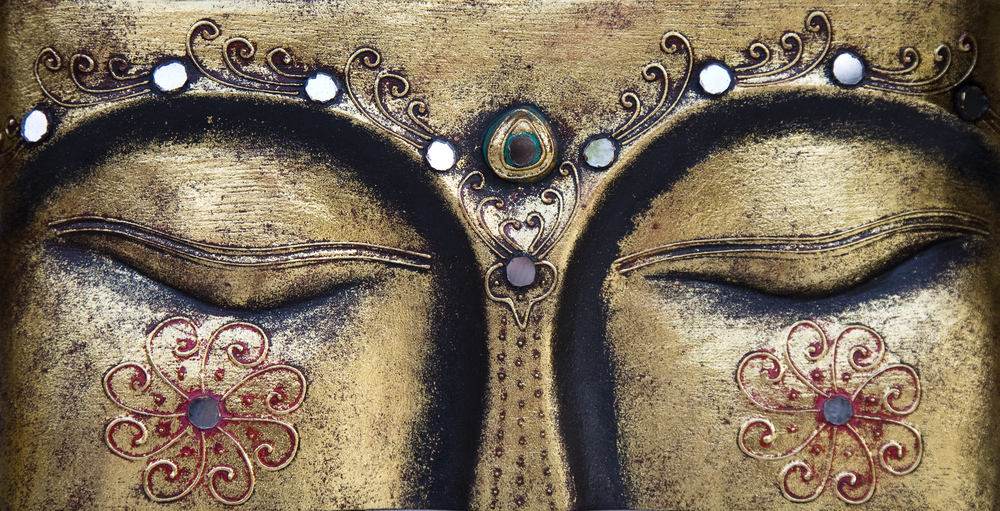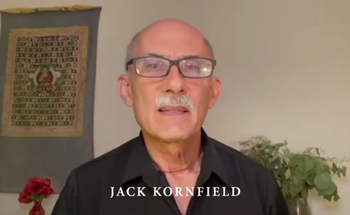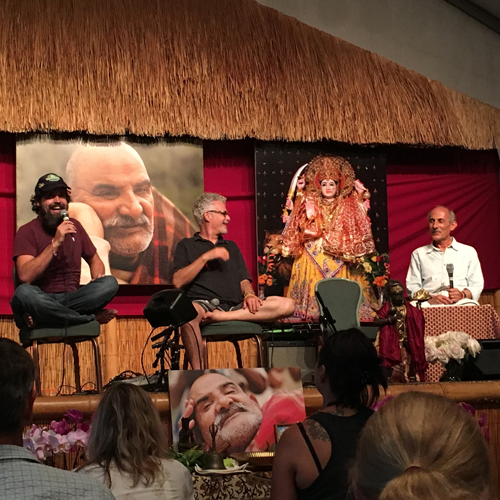Buddhist psychology helps us with two important tasks in working with thoughts. First it teaches us how to acknowledge the content of our thoughts. Second, we learn the ability to disentangle from them.
When we examine our thought stream with mindfulness, we encounter the inner soundtrack. As it plays, we can become the hero, the victim, the princess or the leper. There is a whole drama department in our thoughts, and its casting director is indiscriminately handing out the roles of inner dictators and judges, adventurers and prodigal sons, inner entitlement and inner impoverishment. Sitting in a meditation class we are forced to acknowledge them all. As Anne Lamott writes, “My mind is like a bad neighborhood, I try not to go there alone.”
When we see how compulsively these thoughts repeat themselves, we begin to understand the psychological truth of samsara, the Sanskrit word for circular, repetitive existence. In Buddhist teaching, samsara most commonly refers to the wheel of life. On this wheel, beings are re-born and subject to suffering until they develop understanding and find liberation. Samsara also describes the unhealthy repetitions in our daily life. On a moment to moment level, we can see the samsaric way our thought patterns habitually re-arise, often in unconscious and limited ways. For example, we see how frequently our thoughts include fear, judgment, grasping, or simply justify our point of view. There is an Indian saying about these kind of thoughts: “He who cannot dance claims the floor is uneven.”
When we first pay attention, we discover that our thoughts are sticky, hard to step out of, like treacle. As Ajahn Buddhadasa observed, most of the time we are “lost in thought.” Fortunately, with training, we can become mindful of the patterns of thought that condition our perception. We can cut through the sticky patterns which predominate, whether fear or competition, jealousy or caring, judgment or curiosity.
To start, it helps to acknowledge the most repetitious thoughts, the “top ten tunes,” by naming them. They might be repeated thoughts about money, or a conflicted situation or anxious thoughts rehearsing an upcoming event. For many, the judging mind is a common tune, representing all the critical, disappointed voices from our childhood. If we fight it – “I shouldn’t be judging. I’m too harsh,” – we only add more judging. When the judging mind appears, we can simply acknowledge it with an inward bow and say, “Oh, yes, the judging mind.” As soon as we do, the judging thought loses its power over us. We can even say, “Thank you for your opinion.”
Like a sculptor who has many tools, there are a variety of skillful means to cut through the thicket of thoughts. If we are swept away, we may initially quiet the mind by concentrating on the breath or use a visualization or the simple repetition of a mantra. We can step outside our thoughts through mindfulness of the body or contemplative walking. We can release our thoughts by reflecting on death, on love, on emptiness. We can begin to look for moments of stillness whenever they arise.
Sometimes a teacher can help the whole community find a way to stillness. There was a silence around Ajahn Chah when he sat with us that showed a possibility of our own steadiness. Zen Master Thich Nhat Hanh carries this stillness even as he moves. Periodically, he has come to offer teachings to several thousand students gathered outdoors at Spirit Rock Meditation Center. Each time, as he walked up the road to begin teaching, the slow, beautifully careful placement of his steps on the earth was visible to all. A stillness fell over the crowd. The power of Thich Nhat Hanh’s mindfulness brought everyone into the present. His presence inspired a profound attention.
This kind of attention is possible for us all. We do not have to sit with Thich Nhat Hanh or walk at the edge of the Grand Canyon. There is a vast silence around us always. Wherever we are, we can take a deep breath, feel our body, open our senses and step outside the endless stories of the mind. We can stop. We can rest our awareness in a spacious and compassionate heart. Then we can see our views, our thoughts, our worries and images as only one part of a much larger story.
This excerpt is taken from the book, “The Wise Heart“






